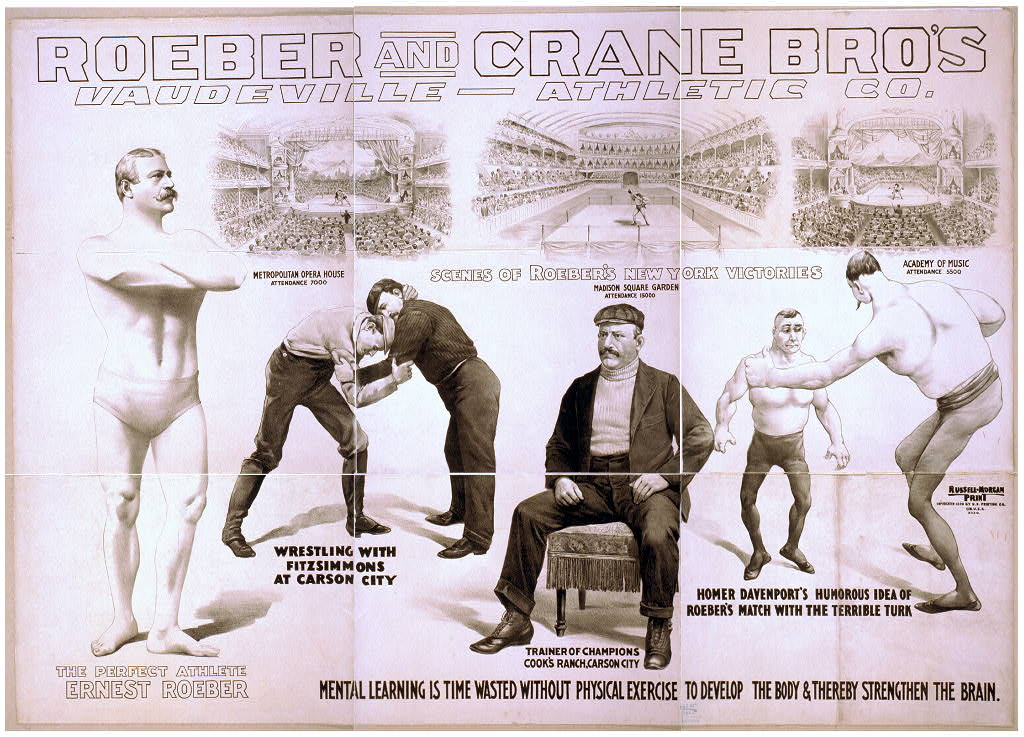Let us dive into a topic that has been addressed many
times in the past, many times in the present, and likely on into the future;
the perennial question of “Can a boxer beat a wrestler?”, or we can rephrase it
as “Can a striker beat a grappler?”
We could, and perhaps will another day, offer the
record of how often these early mixed matches occurred and all the commensurate
outcomes from such matches. But today let's look to another sports authority
who examined the same question, David Willoughby.
Mr. Willoughby dove deep into the historical record of
boxing, wrestling and combination matches, which is the mix of boxing and
wrestling. In some cases the rules stated, “This round is boxing and this round
is wrestling,” in other cases it was actual mixed matches where the competitors
got to use whatever discipline they felt comfortable with.
Well according to Mr. Willoughby and his studies the
question of “Can a wrestler beat a boxer?” should no longer be a question,
since it has already been answered several times, always in the affirmative.
Let us look to a few early standout answers to this persistent
question.
The first notable instance occurred when, in 1887, the
fabulous John L. Sullivan went into the ring with his trainer, the Greco-Roman
wrestling champion, William Muldoon. Sullivan started the proceedings by
tripping Muldoon. But before John L. could do anything further, Muldoon was
back on his feet. Taking a waist hold on Sullivan, Muldoon slammed the prize
fighter to the mat so hard that Sullivan laid there, stunned. Time: 2 minutes!
Might I add that the trainer in question, William
Muldoon, was also one of the early physical culturists who used Warrior Walking
as the original roadwork. For more on Warrior Walking, browse this blog, shop
our store.
The next publicized encounter of this kind was when,
sometime during the 1890s, the then heavyweight boxing contender, Bob
Fitzsimmons, thought he could take the measure of the then Greco Roman
wrestling champion, Ernest Roeber. But Roeber simply grabbed Fitz’s left hand,
pulled him to the canvas, applied a double arm lock, and made Fitzsimmons cry “Uncle.”
And then there was the “match,” in 1936, between the
heavyweight boxing contender, Kingfish Levinsky, and the veteran wrestler, Ray Steele.
The Kingfish aimed a left hook at Steele, who ducked the punch, grabbed Levinsky,
and slammed him to the mat--all in 35 seconds.
Even Jim Corbett, who was perhaps the cleverest of the
early heavyweight cadre, expressed the opinion that in such mixed matches, “nine
times out of ten, the wrestler will win.”
Who are we to contradict the authority of Gentleman
Jim?
All this is not to say that boxing/striking is
valueless—that is absurd.
Boxing/striking has its place, of course.
It is to say though, that those who undervalue grappling,
and perhaps overestimate the striking game may do so at odds with the historical
record and expert opinions such as Gentleman Jim’s.
An assumption of, “Well, I simply won’t let the
wrestler get ahold of me, I’ll cold cock him before he can get to me.”
I offer, that is exactly what each of the above,
likely better strikers than you and I thought.
What are we to do with this information?
Not a thing if you do not desire.
Train as to make you happy.
If your training is inside a ludic bubble of “You’re
not allowed to do that” whether the “not allowed” is grappling, head kicks,
cartwheels, what have you—you know best what fits your chosen game. I repeat—Game.
If…if your focus is even obliquely related to the
scrum of reality outside of game-rules, well, then I would say, everyone needs
to be able to grapple, at least a little.
Ignoring this aspect while making claims for tactical
readiness is, well, puzzlingly at odds with reality.
If one desires to train as an Old School Combination Fighter,
which is the focus of Black Box Training, Combination Fighting and Rough n
Tumble, in that case, I offer the Pareto Principle advice of using the 80/20
Rule.
Make 80% of your training grappling oriented—be that
ground, clinch, takedowns, anti-takedown, escapes, counters etc.
And 20% hardcore striking.
Corbett would weight that training ratio more towards
90/10 but, me, hell, I like throwing hands too much to cut back much more than
that.
For those who still lull into the, "Well, grappling is important but all ya gotta do to counter that stuff is..." Might I suggest these two additional resources to assist the full-load of consideration in that area.
Counter Grappling & Specious Tactics
For info on The Black Box Project and all of
our sundry products and training programs see here.
Or try our podcast: Mark Hatmaker Rough n Tumble
Raconteur.

Comments
Post a Comment